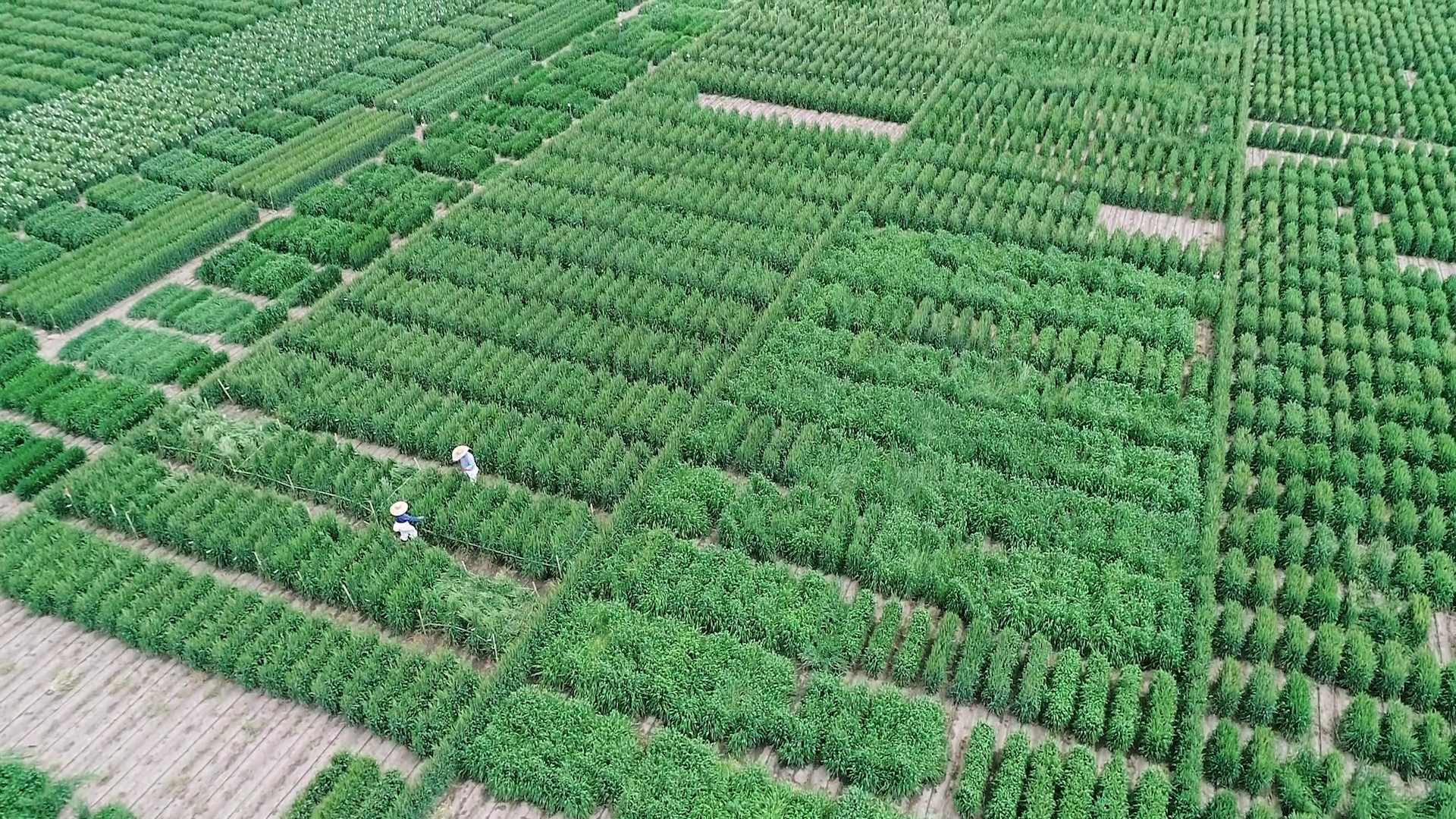This story is one of a series of features written during CIMMYT’s 50th anniversary year to highlight significant advancements in maize and wheat research between 1966 and 2016.
EL BATAN, Mexico (CIMMYT) — In 1935, Japanese scientist Gonjoro Inazuka crossed a semi-dwarf Japanese wheat landrace with two American varieties resulting in an improved variety, known as Norin 10. Norin 10 derived varieties eventually ended up in the hands of Norman Borlaug, beginning one of the most extraordinary agricultural revolutions in history. This international exchange of germplasm ultimately saved hundreds of millions of people from starvation and revolutionized the world of wheat.
The journey of semi-dwarf wheat from Japan to Mexico may have begun in the 3rd or 4th century in Korea, where short wheat varieties are thought to have originated. From East Asia, wheat breeders began to seek and utilize dwarfing genes to breed varieties with high yield potential, resistance to lodging and the ability to produce more tillers than traditional varieties.
The term Norin is an acronym for the Japanese Agricultural Experiment Station spelled out using Latin letters. From 150 centimeters (cm) that other varieties measured, Norin 10 reduced wheat plant height to 60-110 cm. The shorter stature is a result of the reduced height genes Rht1 and Rht2.
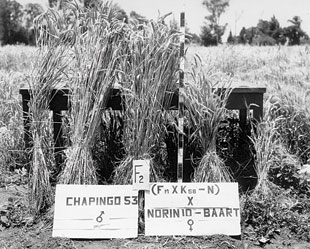
Norin 10 began to attract international attention after a visit by S.D. Salmon, a renowned wheat breeder in the U.S. Department of Agriculture (USDA), to Marioka Agriculture Research Station in Honshu. Salmon took some samples of the Norin 10 variety back to the United States, where in the late 1940s Orville Vogel at Washington State University used them to help produce high-yielding, semi-dwarf winter wheat varieties, of which Gaines was the first one.
In neighboring Mexico, Norman Borlaug and his team were focusing their efforts on tackling the problem of lodging and rust resistance. After unsuccessfully screening the entire USDA World Wheat Germplasm collection for shorter and strong varieties, Borlaug wrote to Vogel and requested seed containing the Norin 10 dwarfing genes. Norin 10 was a lucky break, providing both short stature and rust resistance.
In 1953, Borlaug began crossing Vogel’s semi-dwarf winter wheat varieties with Mexican varieties. The first attempt at incorporating the Vogel genes into Mexican varieties failed. But after a series of crosses and re-crosses, the result was a new type of spring wheat: short and stiff-strawed varieties that tillered profusely, produced more grain per head, and were less likely to lodge. The semi-dwarf Mexican wheat progeny began to be distributed nationally, and within seven years, average wheat yields in Mexico had doubled. By 1962, 10 years after Vogel first supplied seed of the Norin 10 semi-dwarf progeny to Borlaug, two high-yielding semi-dwarf Norin 10 derivatives, Pitic 62 and Penjamo 62, were released for commercial production.
As the figure below indicates, these wheat varieties then led to a flow of other high-yielding wheat varieties, including Sonora 64 and Lerma Rojo 64, two varieties that led to the Green Revolution in India, Pakistan and other countries, and Siete Cerros 66, which at its peak was grown on over 7 million hectares in the developing world. The most widely grown variety during this period was the very early maturing variety Sonalika, which is still grown in India today.
[Reproduced from Foods and Food Production Encyclopedia, Douglas M. Considine]
In the early 1960s South Asia was facing mass starvation and extreme food insecurity. To combat this challenge, scientists and governments in the region began assessing the value of Mexican semi-dwarf wheat varieties for their countries. Trials in India and Pakistan were convincing, producing high yields that offered the potential for a dramatic breakthrough in wheat production but only after agronomy practices were changed. Without these changes, the Green Revolution would never have taken off.
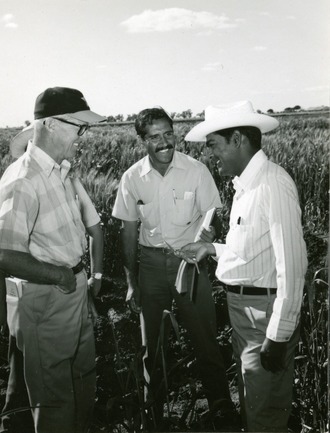
Borlaug had sent a fewdozen seeds of his high-yielding, disease-resistant semi-dwarf wheat varieties to India to test their resistance to local rust strains. M.S. Swaminathan, a wheat cytogeneticist and advisor to the Indian Minister of Agriculture, immediately grasped their potential for Indian agriculture and wrote to Borlaug, inviting him to India. Soon after the unexpected invitation reached him, Borlaug boarded a Pan Am Boeing 707 to India.
To accelerate the potential of Borlaug’s wheat, in 1967 Pakistan imported about 42,000 tons of semi-dwarf wheat seed from Mexico, Turkey imported 22,000 tons and India 18,000 tons. At the time this was the largest seed purchase in the history of agriculture. Wheat yield improvement in both India and Pakistan was unlike anything seen before.
Fifty years on, we face new challenges, even though we have continued to make incremental increases to average yield. There is an ever-increasing demand for wheat from a growing worldwide population with changing dietary preferences. The world’s climate is changing; temperatures are rising and extreme weather events are becoming more common. Natural resources, especially ground water, are also being depleted; new crop diseases are emerging and yield increases are not keeping pace with demand.
Borlaug and his contemporaries kicked off the Green Revolution by combining semi-dwarf, rust resistant and photoperiod insensitive traits. Today, a new plan and commitment to achieving another quantum leap in wheat productivity are in place. The International Wheat Yield Partnership, an international public-private partnership, is exploiting the best wheat research worldwide to increase wheat yield potential by up to 50%. This one-of-a-kind initiative will transfer germplasm to leading breeding programs around the world.
Cover photo: Norman Borlaug works with researchers in the field. (Photo: CIMMYT archives)
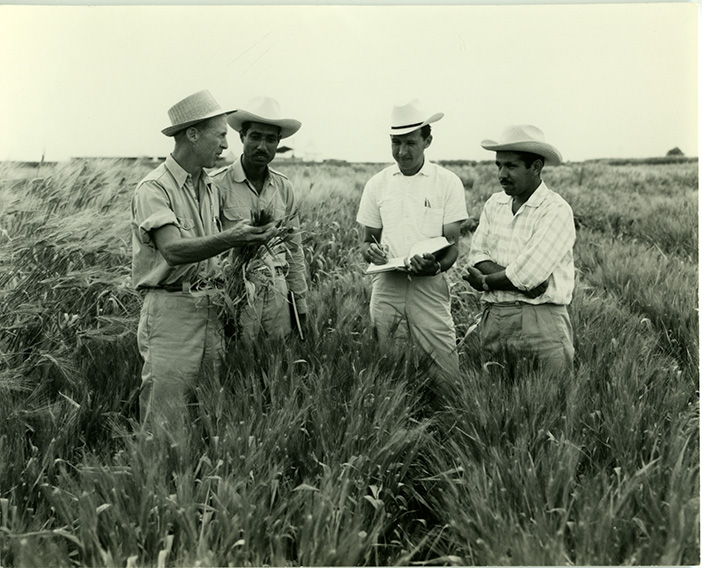
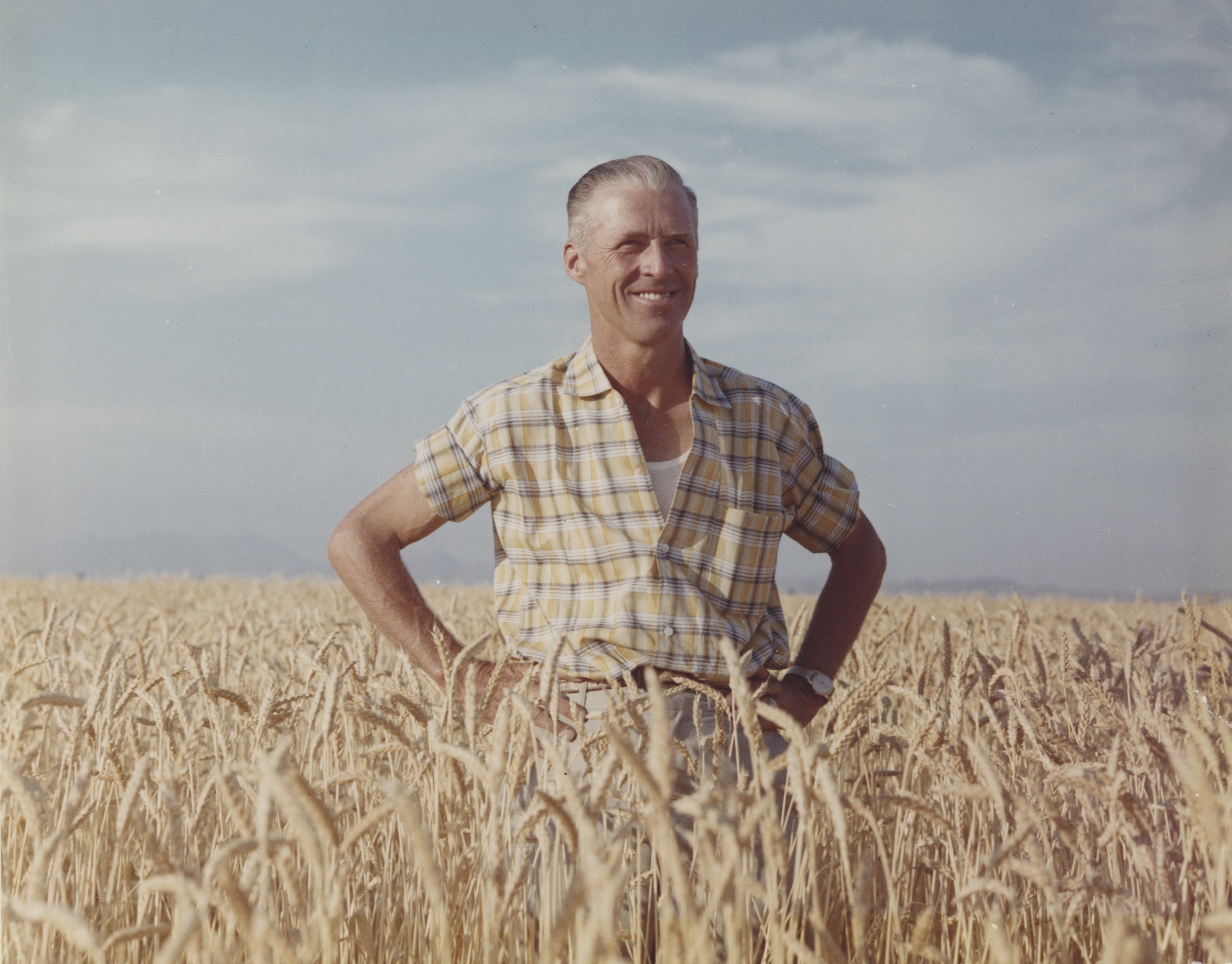
 Nutrition, health and food security
Nutrition, health and food security 